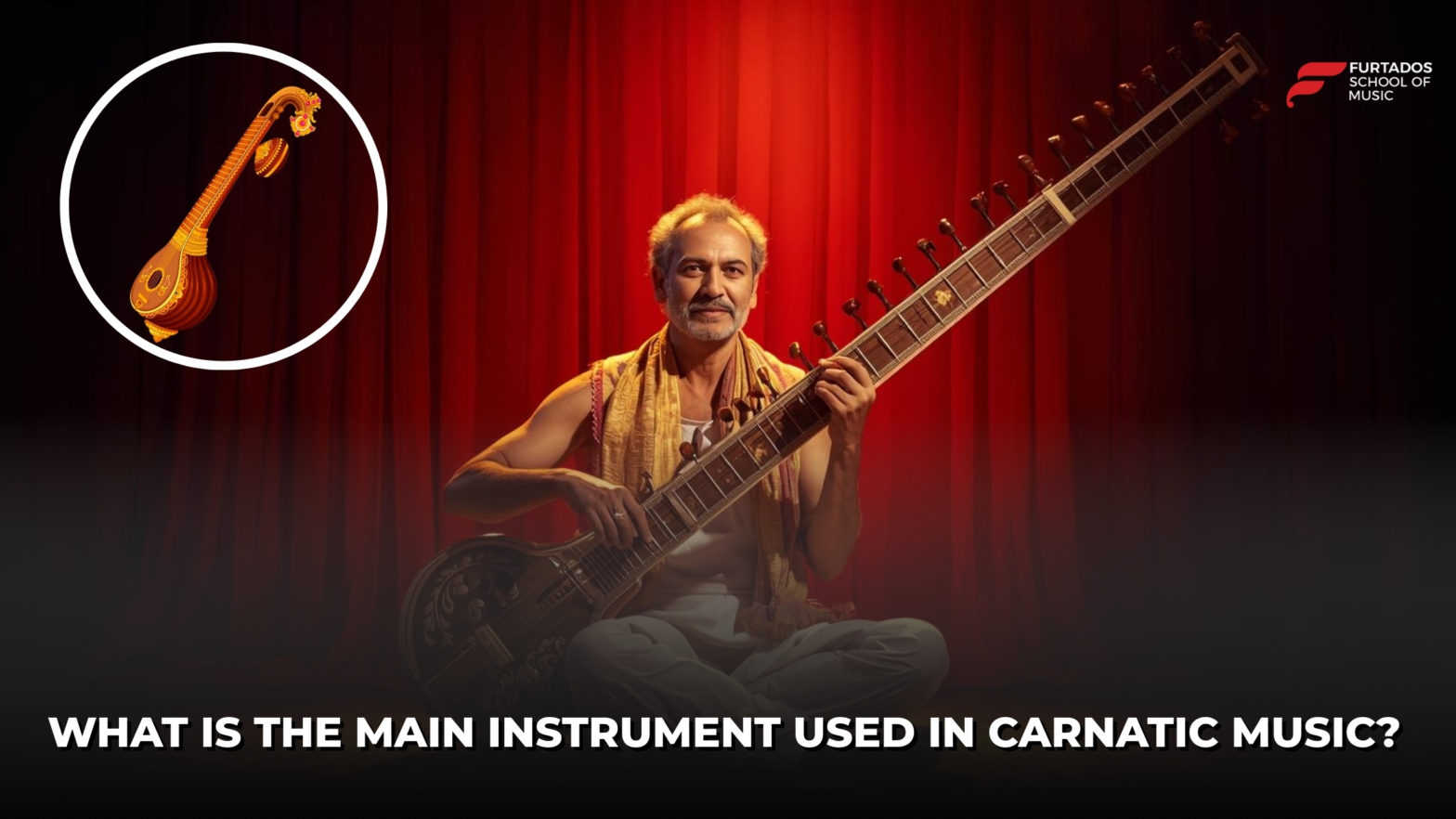Carnatic music, the classical music of South India, is a tradition rich in rhythm, melody, and spiritual depth. While its essence lies in the human voice, a variety of instruments bring this music to life. But when it comes to identifying the main instrument used in Carnatic music, one name stands out: the mridangam. However, this vibrant tradition is incomplete without other iconic Carnatic music instruments like the veena, violin, and flute that play equally vital roles.
Let’s dive into the world of Carnatic music instruments, explore their functions, and understand what makes the mridangam and veena such central pillars of this ancient art form.
Main Instrument Used in Carnatic Music
Mridangam: The Rhythmic Heartbeat of Carnatic Music
The mridangam is widely regarded as the primary percussion instrument in Carnatic concerts. Shaped like a barrel and made from jackfruit wood, this double-headed drum provides the rhythmic foundation for both vocal and instrumental performances.
What makes the mridangam unique is its ability to not just maintain tempo, but also complement and converse with the performer. Skilled mridangam artists engage in “thanis” or solo rhythmic interludes during a concert, often creating moments of intense excitement and audience engagement.
- Fun Fact: The mridangam is considered a divine instrument and is often associated with Nandi, the bull of Lord Shiva, who is said to have played it.
Its deep bass, intricate strokes, and expressive capacity make the mridangam the pulse of Carnatic performances—undeniably the most central of all Carnatic music instruments.
Veena: The Soulful String of Tradition
If the mridangam is the heartbeat, the veena is the soul of Carnatic music. An ancient plucked string instrument, the veena is known for its rich, resonant sound and its deep cultural symbolism. It is not only revered in music circles but also in Indian mythology—where the goddess Saraswati is often depicted holding a veena.
The structure of the veena consists of a large resonator made of wood, a long neck with frets, and four main playing strings. Artists use a combination of plucking and sliding techniques to produce gamakas (musical ornamentations), which are a defining feature of Carnatic music.
- Fun Fact: The veena is one of the oldest Indian instruments, with references found in texts over 2000 years old.
While it is a solo instrument, the veena can also accompany vocalists. It holds a special place in the lineage of Carnatic music instruments, offering not just melody, but spiritual depth.
Other Essential Carnatic Instruments
Though the mridangam and veena hold iconic status, many other instruments enrich Carnatic performances:
Violin
Introduced into Carnatic music in the 18th century, the violin quickly became a preferred melodic accompaniment due to its ability to mimic vocal nuances. Played in a sitting position with the scroll resting on the ankle, it follows the vocalist almost note for note.
Flute (Venu)
This bamboo wind instrument, known as the “venu,” offers sweet, expressive tones and is a staple in instrumental concerts. The Carnatic style of flute playing uses a lot of ornamentation and complex breath control.
Ghatam & Kanjira
These are secondary percussion instruments that add texture to the rhythmic landscape created by the mridangam. The ghatam is a clay pot, while the kanjira is a small frame drum similar to a tambourine.
Each of these Carnatic music instruments plays a unique role—supporting, enhancing, or leading the performance depending on the composition and the setting.
Learn Carnatic Music the Right Way — With FSM
Whether you’re fascinated by the complexity of the mridangam, the grace of the veena, or the full range of Carnatic music instruments, learning this beautiful tradition is now easier than ever.
At FSM (Furtados School of Music), students of all ages can enroll in structured Carnatic music courses that combine tradition with interactive learning. Expert faculty guide learners through voice training, rhythm exercises, and instrumental mastery—helping them understand not just how to play, but how to truly feel Carnatic music.
FSM’s curriculum includes:
- One-on-one and group sessions
- Instrument-specific training (including mridangam and veena)
- Lessons in theory, raga development, and performance
Whether you’re a beginner or a music lover ready to explore this classical form, FSM provides the perfect platform to start your journey.
Final Note
The mridangam may be the cornerstone of rhythm, and the veena the queen of melody. But together with other powerful Carnatic music instruments, they form a tapestry of sound that is both ancient and timeless. Understanding and appreciating these instruments not only deepens your love for music but also connects you to a rich cultural heritage.
So next time you listen to a Carnatic concert, pay close attention—you might just discover your favorite sound among the strings, drums, or winds of South India’s musical treasure chest.
